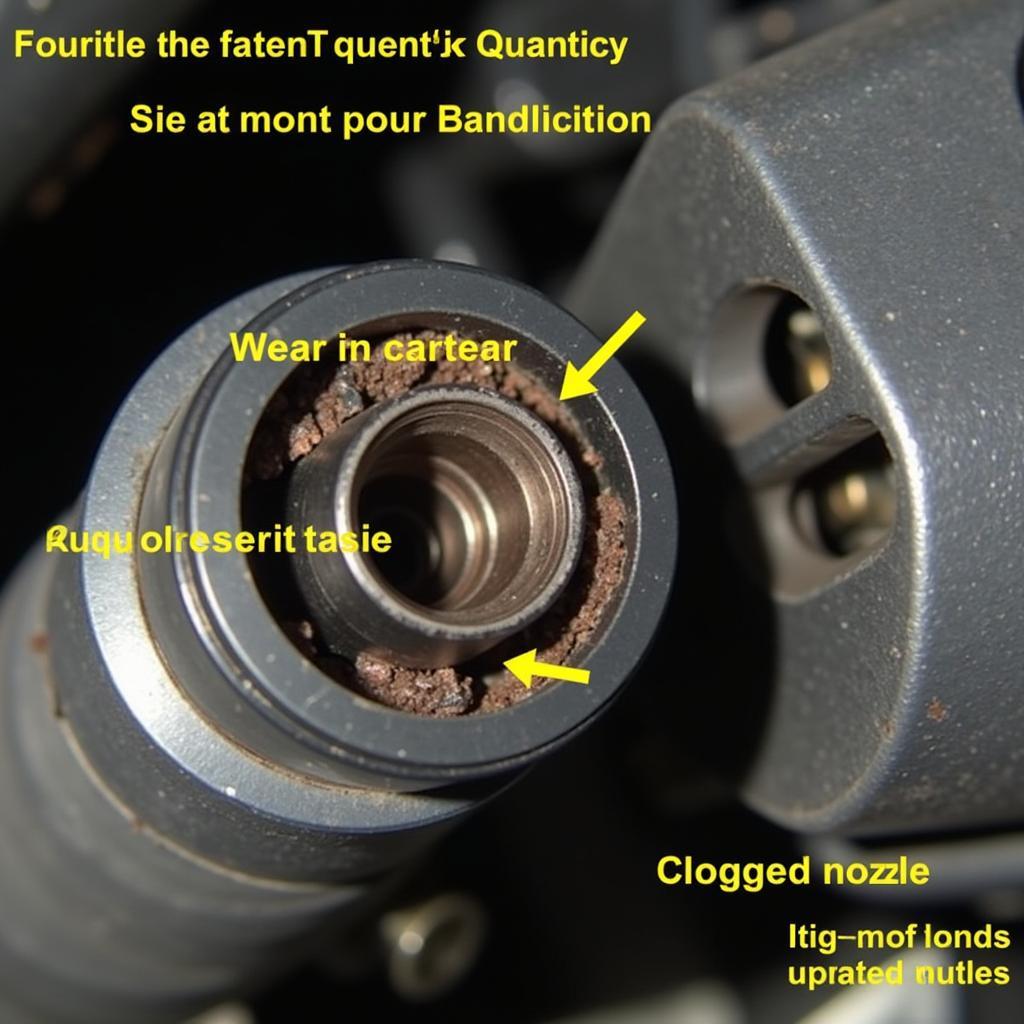VCDS injection quantity deviation is a crucial parameter for diagnosing diesel engine performance issues. This article delves into the intricacies of this parameter, explaining its significance and how to effectively interpret its readings using VCDS, the powerful diagnostic software. Understanding this data can help car owners, mechanics, and technicians pinpoint problems with fuel injectors, the fuel pump, and other related components, leading to accurate repairs and improved vehicle performance.
One of the most useful features of VCDS is its ability to monitor injection quantity deviation. This measurement provides valuable insights into the health and performance of each individual fuel injector. By understanding what these deviations signify, you can accurately diagnose and address potential issues within your diesel engine. Similar to vcds tdi graph, understanding injection quantity deviation can provide a detailed picture of your engine’s performance.
What is VCDS Injection Quantity Deviation?
VCDS injection quantity deviation refers to the difference in the amount of fuel injected by each cylinder compared to the average fuel injection quantity. Ideally, all injectors should deliver the same amount of fuel. However, variations can occur due to wear and tear, blockages, or other malfunctions. These deviations are measured in milligrams per stroke (mg/str).
Small deviations are often within acceptable tolerances. However, significant deviations can indicate a problematic injector or other related issues. This information is crucial for targeted repairs and efficient troubleshooting.
 VCDS Injection Quantity Deviation Graph
VCDS Injection Quantity Deviation Graph
How to Measure Injection Quantity Deviation with VCDS
Measuring injection quantity deviation with VCDS is a relatively straightforward process. First, connect your VCDS interface to your vehicle’s OBD-II port. Then, open the VCDS software and select the appropriate engine control module. Navigate to the “Measuring Blocks” function and select the group that displays injection quantity deviation values. For most TDI engines, this is typically group 13. You’ll find this process similar to vcds injection quantity.
Once you’ve accessed the correct measuring block group, you’ll see the deviation values for each cylinder displayed in real-time. Observe these values at idle and under various engine loads to get a comprehensive picture of injector performance. For detailed guidance on fuel injector testing, see how to check fuel injectors with vcds.
Interpreting the Results
Interpreting VCDS injection quantity deviation requires understanding the acceptable tolerance range for your specific engine. Generally, deviations within ±2.8 mg/str are considered normal. However, it’s always best to consult your vehicle’s service manual for precise specifications. Deviations exceeding this range can point to several potential problems:
- Faulty Injectors: A significantly high or low deviation for a specific cylinder often indicates a faulty injector. This could be due to a clogged nozzle, internal leakage, or other mechanical issues. Knowing this can save you time and money compared to guessing.
- Fuel Pump Issues: In some cases, inconsistent injection quantities can be caused by a failing fuel pump. This can result in inadequate fuel pressure or uneven fuel delivery to the injectors. Refer to how to test fuel injection pump with vcds for further information on testing your fuel pump.
- Wiring Harness Problems: Damaged or corroded wiring in the injector harness can also affect injection quantities. This can disrupt the electrical signals sent to the injectors, leading to erratic performance.
- Other Sensor Issues: Problems with other engine sensors, such as the crankshaft position sensor or camshaft position sensor, can indirectly affect injection timing and quantity.
“A common misconception is that any deviation automatically means a bad injector. It’s important to analyze the data in context and consider other factors,” says John Miller, a certified automotive diagnostic technician with over 20 years of experience.
 Faulty Injector Symptoms
Faulty Injector Symptoms
What to Do if You Find a Deviation
If you detect a significant VCDS injection quantity deviation, the next step is to conduct further diagnostic tests to pinpoint the root cause. This may involve performing a compression test, leak-down test, or injector balance test. Once you’ve identified the faulty component, you can proceed with the necessary repairs or replacements.
“Don’t rush to replace parts without proper diagnosis. A systematic approach using VCDS and other diagnostic tools can save you a lot of time and money in the long run,” advises Sarah Chen, a senior automotive engineer specializing in diesel engine technology. This relates to calculating MPG using VCDS, as covered in our article how to do mpg with vcds.
Conclusion
VCDS injection quantity deviation is a powerful diagnostic parameter for identifying potential problems within diesel engines. By understanding how to interpret these readings, you can accurately diagnose and address issues related to fuel injectors, the fuel pump, and other related components. This knowledge empowers car owners, mechanics, and technicians to perform effective repairs, optimize engine performance, and ensure the longevity of their vehicles.
FAQ
- What is a normal injection quantity deviation? Generally, deviations within ±2.8 mg/str are considered acceptable.
- What causes high injection quantity deviation? A faulty injector, fuel pump issues, wiring problems, or other sensor issues can cause high deviations.
- How do I fix injection quantity deviation? The solution depends on the root cause, which requires further diagnostic testing.
- Can I drive with injection quantity deviation? Driving with significant deviations can lead to further engine damage.
- Is VCDS the only tool to measure injection quantity deviation? Other specialized diagnostic tools can also measure injection quantity deviation.
- What is the importance of injection quantity deviation? It helps identify potential fuel system problems early on, preventing more serious damage.
- How often should I check injection quantity deviation? Regular checks during routine maintenance are recommended.
Need further assistance? Contact us via Whatsapp: +1 (641) 206-8880, Email: CARDIAGTECH[email protected] or visit us at 276 Reock St, City of Orange, NJ 07050, United States. Our customer support team is available 24/7.

